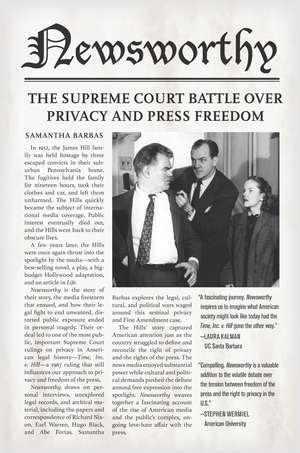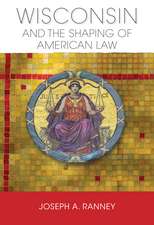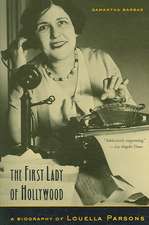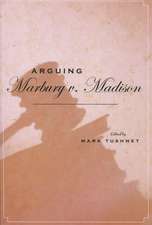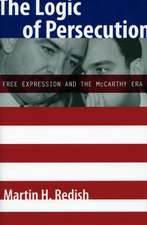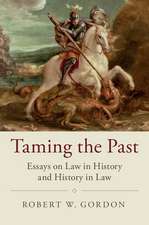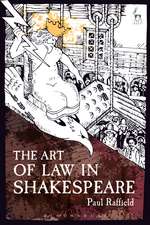Newsworthy: The Supreme Court Battle over Privacy and Press Freedom
Autor Samantha Barbasen Limba Engleză Hardback – 17 ian 2017
Newsworthy draws on personal interviews, unexplored legal records, and archival material, including the papers and correspondence of Richard Nixon (who, prior to his presidency, was a Wall Street lawyer and argued the Hill family's case before the Supreme Court), Leonard Garment, Joseph Hayes, Earl Warren, Hugo Black, William Douglas, and Abe Fortas. Samantha Barbas explores the legal, cultural, and political wars waged around this seminal privacy and First Amendment case. This is a story of how American law and culture struggled to define and reconcile the right of privacy and the rights of the press at a critical point in history—when the news media were at the peak of their authority and when cultural and political exigencies pushed free expression rights to the forefront of social debate. Newsworthy weaves together a fascinating account of the rise of big media in America and the public's complex, ongoing love-hate affair with the press.
Preț: 160.05 lei
Nou
30.63€ • 31.86$ • 25.29£
Carte disponibilă
Livrare economică 22 martie-05 aprilie
Specificații
ISBN-10: 0804797102
Pagini: 352
Dimensiuni: 152 x 229 x 30 mm
Greutate: 0.6 kg
Editura: Stanford University Press
Colecția Stanford Law Books
Recenzii
Notă biografică
Cuprins
This chapter describes the "hostage incident" that initiated the Time, Inc. v. Hill case. In 1952, the James Hill family was held hostage in their home by three escaped convicts, who left without harming them. The story of the crime was written up in the press, and the incident inspired a novel, play, and film titled The Desperate Hours.
In 1954, Joseph Hayes wrote The Desperate Hours, a "true-crime thriller" based loosely on the hostage incident involving the Hill family. The Desperate Hours became a bestseller; it was adapted into a play, and in 1955, a Hollywood film starring Humphrey Bogart.
In 1955, Life magazine published an article announcing the opening of the play The Desperate Hours. The article falsely described the play as a "reenactment" of the Hills' hostage incident. This chapter tells the story of the writing of the article, and gives background information on Life's publisher, Time, Inc. It describes the Hills' reaction to the article, which thrust them into the spotlight against their will and portrayed them in a false, distorted context.
Shortly after the publication of the Life article, James Hill filed suit against Time, Inc., alleging an invasion of his privacy. The Hill family was represented by Leonard Garment, a young, up-and-coming lawyer at the New York law firm Mudge, Stern, Baldwin, and Todd.
This chapter describes the origins of the tort action for invasion of privacy, the basis of the Hills' lawsuit against Time, Inc.
At the same time the right to privacy was developing in the early twentieth century, courts were limiting the privacy tort in the interest in freedom of the press. By the 1950s, the right to privacy and freedom of the press were on a collision course, and the Hills' case would be at their juncture.
This chapter describes Time, Inc.'s response to the Hills' lawsuit, and the legal department at Time, Inc. In the mid-twentieth century, lawyers at major media companies like Time, Inc. were major forces in the creation of modern First Amendment law.
This chapter describes the ongoing impact of the Life article on the Hill family, the initial stages of the Hills' lawsuit, and the contested social terrain on which it was fought. In the 1950s, some courts, against the backdrop of increasing anti-press sentiment, were expanding the privacy tort. Others, reflecting growing sensitivities towards civil liberties in the postwar era, were diminishing the right to privacy in the name of First Amendment freedoms.
In the trial of Hill v. Hayes in 1962, a jury concluded that Time, Inc. had invaded the privacy of the Hill family and awarded them $175,000, the largest invasion of privacy verdict in history.
The Hills' lawsuit against Time, Inc. took place at a time of great anxiety around personal privacy. In the 1950s and 60s, "privacy," in all its meanings and senses, was seemingly under assault by an array of forces: the media, the government, researchers, advertisers, and marketers, armed with new surveillance and monitoring technologies. There was a "privacy panic" in the postwar era, and it influenced the course of the Hill case.
In May 1963, an appeals court upheld the judgment against Time, Inc.
Shortly after Time, Inc. announced its intent to appeal to the U.S. Supreme Court in 1965, the Court issued its decision in Griswold v. Connecticut, announcing a "right to privacy" in the Fourteenth Amendment and the Bill of Rights. Like New York Times v. Sullivan, Griswold complicated the Hill case. Not only a right protected by tort law, privacy was now potentially a broad, general right guaranteed by the Constitution.
In 1965, the Hills acquired an unexpected advocate. Two years earlier, the former Senator, Vice-President, and presidential candidate Richard Nixon joined the Mudge law firm. Nixon would argue the Hills' case before the Supreme Court. The case became an integral part of Nixon's efforts to rehabilitate his public image during his "Wilderness Years," the six-year span between his failed run for the California governorship in 1962 and his election as President in 1968.
Against the backdrop of cultural concerns with privacy and press ethics, and in the shadow of Sullivan and Griswold, Time, Inc. v. Hill came to the Supreme Court freighted with a good deal of significance. The case tapped into pressing social issues: the future of privacy in the information society, the meaning of "the news," the boundaries of freedom of the press in the age of big media. It also raised questions of constitutional doctrine that were contested on the Court ¿ the status of the constitutional right to privacy, and possible extensions of the New York Times v. Sullivan doctrine.
After arguments by Nixon and Harold R. Medina, Jr., representing Time, Inc., the Supreme Court initially came down on the side of privacy. A 6-3 majority decided in favor of the Hills, upholding the judgment of the New York courts. Expanding the "right to privacy" established in the Griswold decision, the majority opinion, written by Justice Abe Fortas, declared that the Hills had a constitutional right to privacy that could be invoked not only against the government, but also private actors like the press. Ultimately, however, the Court changed its mind. As a result of lobbying by Justice Hugo Black, a First Amendment absolutist, votes switched, and a new majority voted in favor of Time, Inc.
William Brennan wrote the majority opinion in Time, Inc. v. Hill, issued in January 1967. Invoking the New York Times v. Sullivan standard, Brennan held that the Hills could not recover for invasion of privacy unless they could show that Life's story about them was false, and that the falsehood was made with reckless disregard of the truth. The Brennan opinion announced a capacious vision of freedom of the press, perhaps the broadest in the Supreme Court's history to that time.
Time, Inc. v. Hill transformed the meaning of freedom of the press and the scope of the right to privacy in the United States. Time, Inc. v. Hill set forth an expansive vision of freedom of the press and dimmed the potential for a strong right to privacy that could be invoked against the press. This chapter examines the short and long-term consequences of the Hill decision on politics, publishing, and the First Amendment.
